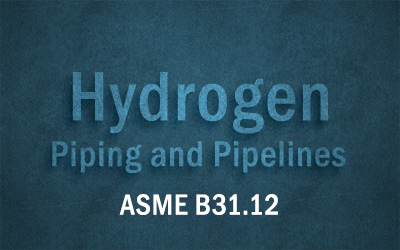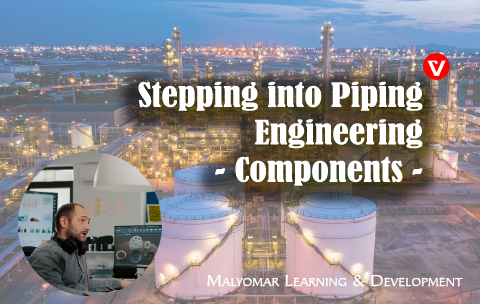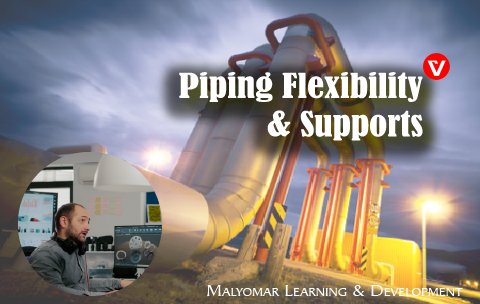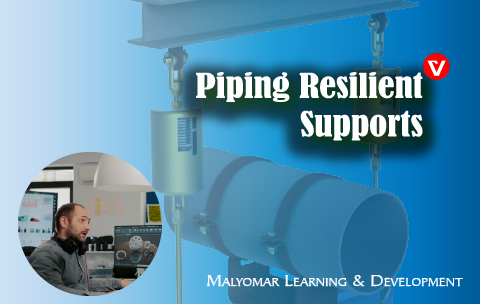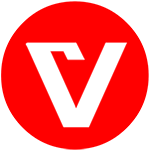Popular Topics
Piping
pipeline
Plant Assets.
Stress
Hydrogen
Damper
Flexible bellow
Piping Maintenance
Spring hanger
Spring Support
Flexible joint
Piping Procurement
Flexibility
Piping Installation
HAZOP
Plant Layout
ASME
piping design
value engineering
Field Engineering
Static Analysis
Dynamic
Engineering materials
maintenability
solid mechanics
Operability
Plant Layout,
Pipe stress analysis
Accessebility
strength of materials
CAESAR-II
Site supervision
Feasibility Study
stress analysis
Piping Construction
Revamp
pipe supports
Brownfield
Constructebility
Process Safety
Popular Instructors
All Piping and Pipelines Courses
Pipe Stress analysis and supporting systems for piping designers
What you'll learn
Eliminate Design Iterations: Proactively design layouts that meet mechanical requirements, directly reducing costly communication loops and eliminating re-work cycles between the Piping Design and Stress Analysis teams.
Translate Code to CAD: Gain the essential knowledge of stress analysis criteria (e.g., thermal flexibility, support span limits) and learn to implement these ASME B31 code rules directly within your 3D modeling environment.
Master Load Vector Generation: Understand precisely how your layout decisions (routing, branch connections, component weight) directly translate into critical load vectors that determine the compliance of the entire system.
Optimize Support System Placement: Select and place piping support systems not just for weight, but to effectively control displacement and manage moment loads, making the system inherently mechanically sound from the initial draft.
Accelerate Deliverable Approval: Structure and prepare piping deliverables (Isometrics, Plan Views) to proactively address the stress engineer's needs, leading to faster review cycles and accelerated project turnover.
Validate Constructability & Compliance: Achieve true engineering synergy by ensuring your designs are simultaneously constructable, cost-efficient, and fully compliant with ASME flexibility and sustained stress limits.
ASME B31.12 Hydrogen Piping and Pipelines
What you'll learn
Hydrogen Technologies and Market Players
Global Policies
Describe the scope of B31.12
Explain the design requirements of B31.12
Identify materials requirements
Explain B31.12 requirements for fabrication, assembly, and erection
Explain the B31.12 requirements for inspection, examination, and testing
Pipe Stress Engineering-Academic foundation
What you'll learn
Differentiate between properties of various engineering materials.
Apply fundamental principles of stress, strain, and material failure theories.
Perform stress analysis on different structural components.
Utilize Finite Element Analysis (FEA) software for complex problems.
Analyze thermal, static, and dynamic loads.
Develop a strong theoretical foundation for specialized fields like pipe stress analysis.
Pipe Stress Engineering, Static
What you'll learn
Execute the accurate geometric and topological discretization of the pressure envelope and ancillary components within the CAESAR II
Define and integrate the set of time-invariant static load vectors
Conduct a rigorous tensor evaluation of primary and secondary stresses
Nozzle and Support Reaction Profiling
Resolve the effects of non-linear boundary conditions
Validate the mechanical integrity compliance margin
Drafting hardware technical specification
Moving among Compliance, Value and Energy
Master the final phase of analysis, producing irrefutable, audit-proof documentation.
Process Plant Layout and Piping Design, Level – I
What you'll learn
Interpret Engineering Documents: Effectively read and utilize core piping design documents, including PFDs, P&IDs, and Isometric drawings.
Identify Components: Differentiate and select standard piping components (valves, fittings, flanges) and understand their functions within the system.
Apply Layout Principles: Execute preliminary Plot Plan and Equipment Layout based on functional and safety criteria.
Establish Design Constraints: Identify and apply the primary constraints that dictate pipe routing (e.g., access, maintenance, thermal expansion).
Determine Clearances: Apply industry standards to determine minimum clearances, spacing, and accessibility requirements for various equipment types.
Communicate Design Intent: Structure and present design information clearly for effective communication with structural, mechanical, and stress engineering teams.
Process Plant Layout and Piping Design, Level-II
What you'll learn
Design Major Plant Areas: Develop comprehensive layouts for common plant areas (e.g., pump stations, compression stations, cooling towers) adhering to API and OSHA standards.
Optimize Pipe Rack Geometry: Calculate and optimize pipe rack width, height, and bay spacing while managing utility segregation and thermal expansion requirements.
Resolve Layout Conflicts: Proactively identify and resolve complex clashes and interferences using 3D model review techniques (e.g., navigating virtual HAZOP and 3D Model Review sessions).
Apply Design for Maintenance (DFM): Ensure adequate maintenance envelopes and removal paths for critical equipment (e.g., heat exchangers, valves, pump spares) to minimize future downtime.
Specify Specialty Items: Prepare accurate data sheets for critical piping specialty items (e.g., strainers, spectacle blinds, flame arrestors) and integrate them correctly into the layout.
Generate Core Deliverables: Produce precise Plot Plans, Equipment Arrangements, and Piping Key Plans suitable for structural and civil engineering use.
Stepping into Piping Engineering – Components
What you'll learn
What is Piping Engineering.
Piping Engineers Roles and Responsibilities.
Detailed study of Piping Network Components.
Process Plant Layout and Piping Design, Level-III
What you'll learn
Implement Design Strategy: Develop and enforce a comprehensive Basis of Design (BOD) for layout, driving standardization and compliance across the project.
Manage Brownfield Constraints: Master the advanced planning and execution required for integrating new piping systems into existing plant infrastructure (Brownfield projects), minimizing shutdown time and maximizing safety.
Optimize Project Cost (Value Engineering): Apply Value Engineering (VE) principles to layout decisions to achieve quantifiable reductions in CAPEX (material costs) and OPEX (maintenance and energy costs).
Lead Safety and Review Workshops: Effectively participate in and lead HAZOP, SIL, and advanced 3D Model Review sessions, driving corrective actions that resolve critical risks.
Validate Stress Analysis Feedback: Critically review the Stress Analysis Report to ensure the final layout satisfies mechanical integrity requirements and manage design iteration cycles efficiently.
Develop Modularization Plans: Evaluate the technical feasibility and cost benefits of modularization and offsite fabrication for large sections of the plant.
- 1
- 2

